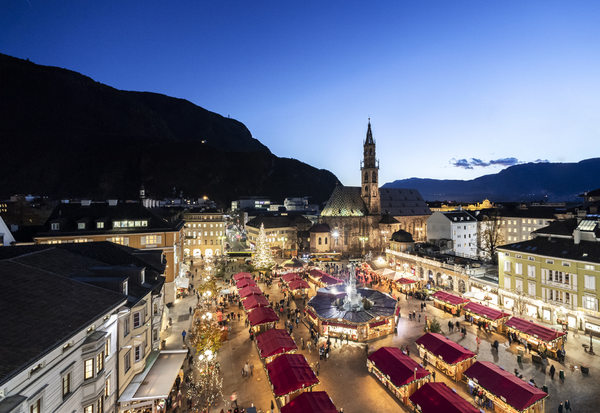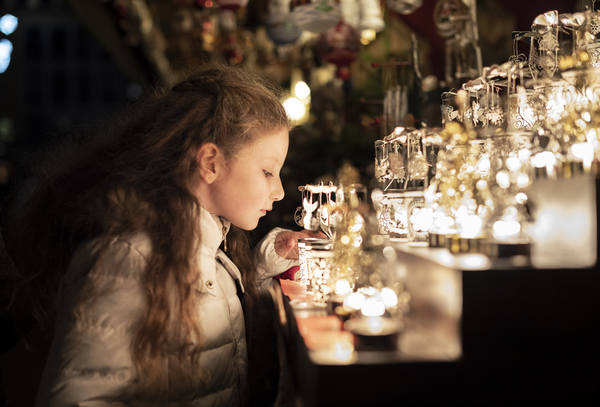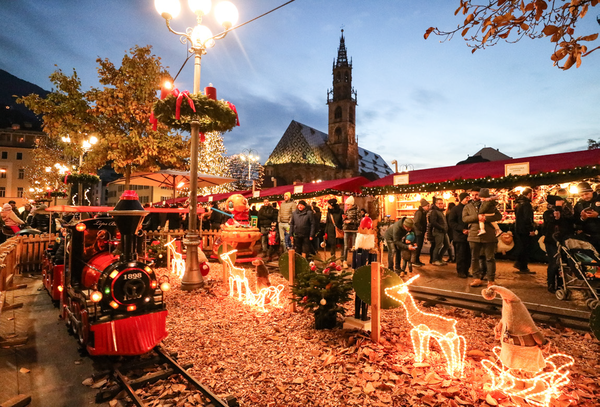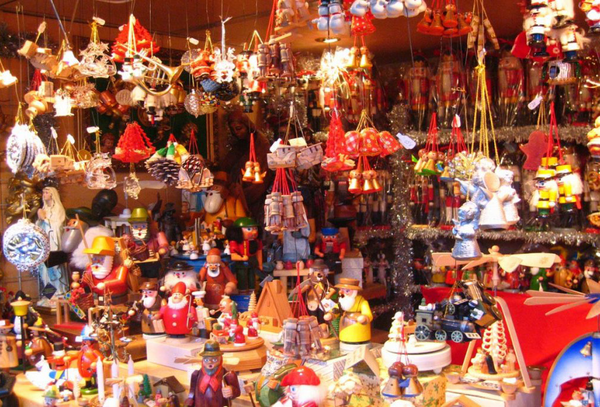크리스마스와 볼차노 전통 축제

[아츠앤컬쳐] 크리스마스 마켓의 역사는 아주 오래되었다. 마켓은 첫 동지 파티로부터 산타클로스의 전통을 바탕으로 한 성 니콜라스의 날까지 열린다. 그 유래를 살펴보면 독일 알자스 지방의 성 니콜라스 마켓으로부터 비롯되며 14세기까지 거슬러 올라간다. 크리스마스 마켓의 존재를 증명하는 첫 문서에는 1434년 크리스마스 전 월요일 드레스덴에서 열린 슈트리첼마르크트(‘슈트리첼’ 마켓, 독일 디저트)가 언급되어 있다. 후에 종교개혁 기간에 성인 숭배에 반대하며 크리스트킨들마르크트에서 이름이 바뀌었다. 다른 고대 마켓을 보면, 스트라스부르 마켓은 1570년으로, 뉘른베르크 마켓은 1628년으로 거슬러 올라간다.
독일, 스위스 및 오스트리아의 많은 도시와 이탈리아 사우스 티롤의 강림절은 일반적으로 크리스마스 마켓 또는 ‘바이나흐트 마르크트’의 시작과 함께 알려진다. 독일 남부, 스위스, 오스트리아에서는 ‘크리스트킨들마르크트’라고 하며 말 그대로 ‘크리스마스 어린이 마켓’을 의미한다. 첫 ‘12월 마켓’은 1298년 비엔나에서 열렸다. 크리스마스 마켓은 오스트리아에서 인기있는 크리스마스 전통으로 1918년까지 오스트리아 제국의 잘츠부르크, 린츠, 그라츠, 인스부르크, 볼차노에서 지속되었다. 전통적으로 마을 광장에 노점을 만들고 음식, 음료 및 계절상품을 판매하며 전통적인 노래와 춤이 동반된다.

사우스티롤의 특징은 이탈리아와 독일의 두 문화가 만나는 이 중 언어 지역이라는 점이다. 볼차노의 크리스마스 마켓은 이탈리아 내의 전형적인 독일식 크리스마스 마켓이다. 해마다 기다려지는 강림절 4주간의 행사는 알토 아디제에서 암흑시대의 잃어버린 의식과 전통을 구현해 올해의 가장 아름다운 축제를 기대하며, 전통의 재발견을 목표로 한다. 은은하고 다양한 조명과 배경 음악, 세레나데처럼 들리는 크리스마스의 왁자지껄한 소리, 공기 속을 떠도는 크리스마스 향료 냄새와 달콤한 계절 요리–전통적인 티롤의 특별식–모두 매우 특별하고 즐거운 크리스마스 분위기를 만들어 낸다.

볼차노의 크리스트킨들마르크트는 11월 28일부터 1월 6일까지로 이탈리아 북부에서 가장 오래된 마켓이며 독특한 스타일을 갖는다. 즉, 남과 북의 만남의 장소로서 여기에는 지난 세기동안 다른 많은 점들이 추가되었다. 이는 가족 전통과 밀접한 관련이 있는데 하얀 나무의 축제 장식, 성탄, 강림절 왕관, 매주 만들어지는 향기로운 케이크와 과자는 비밀 레시피와 트릭을 넣어 전문가의 손으로 만들어진다. 크리스마스트리 아래에서 성탄절은 소박한 알프스 스타일로 돌아간다.
모형 마구간에 소, 당나귀와 함께 하는 성가족은 산림이나 오두막처럼 오래된 나무와 판자 지붕으로 만들어진다. 집 모양의 가판대에서는 장식용 목재 조각상부터 전통 케이크와 과자, 액세서리(슬리퍼, 모자), 문구용품, 악기, 장식용 초 및 수제 크리스마스 공에 이르기까지 엄격한 규정에 따라 현지에서 생산된 물건만 전시한다. 요리 또한 멀드 와인, 독일의 글뤼바인(뱅쇼), 사과 튀김, 사과 주스에서 슈트루델(디저트) 등 신선한 제품을 여러 노점에서 선보이며 관심과 호기심을 계속 끌어모은다. 새로운 방문객은 마법의 크리스마스 분위기에 감싸여 크리스마스 마켓과의 첫 만남을 잊지 못할 것이다.

Christkindlmarkt Bolzano a European tradition before Christmas
The history of the Christmas markets is very old. It is a story linked to the first winter solstice party and then to St. Nicholas, on which the tradition of Santa Claus is based. The first traces of Christmas markets date back to the 14th century in Germany and Alsace with the name of St. Nicholas Market. The first document attesting a Christmas market dates back to 1434 and mentions a Striezelmarkt ('Striezel' market, a German dessert), which took place in Dresden, the Monday before Christmas. Later, during the Protestant Reformation, the name was renamed in Christkindlmarkt, in opposition to the cult of the saints. Other ancient markets are those of Strasbourg which dates back to 1570, and that of Nuremberg in 1628.
In many towns in Germany, Switzerland, and Austria South Tirol in Italy, Advent is usually ushered in with the opening of the Christmas market or "Weihnachtsmarkt". In southern Germany, Switzerland and Austria, it is called a "Christkinlmarkt" ,literally meaning "Christ child market". The first "December Market" was held in Vienna in 1298. Christmas markets are popular Christmas traditions in Austria, and are held in Wien Salzburg, Linz, and Graz, Innsbruck and Bolzano in South Tirol, belonged to the Austrian Empire until 1918. Traditionally held in the town square, the market has food, drink and seasonal items from open-air stalls accompanied by traditional singing and dancing.
The peculiarity of South Tyrol is that it is a bilingual area, where two cultures meet, the Italian and the German. The Christmas Market in Bolzano has the distinction of being a typical and traditional German Christmas Market in Italy. Each year this awaited event is aimed at rediscovering the traditions that, in Alto Adige, are hidden behind the four weeks of the Advent, in anticipation of the most beautiful festival of the year that evolves through rituals and traditions lost in the dark ages. The gentle, variegated lighting, the background music and buzzing yuletide hubbub as serenade, the Christmas spices that perfume the air and the sweet seasonal delicacies – specialities from traditional Tyrolean cuisine – all joyfully conspire to create a very special Christmas atmosphere.
The Bolzano Christkindlmarkt Christmas market, from 28th November to 6th January, is the oldest of northern in Italy and has added its own unique twist: it has become a point of encounter between North and South, as it has with so many other things here down the centuries. There is a strong link with family traditions: the festive decorations on the white tree, the nativity, the advent crown, the scented cakes and confectionery made week after week by the expert hands of those who keep their secret recipes and tricks.
Underneath the Christmas tree the nativity returns in real rustic alpine style: the Holy Family with cow and donkey inside a real miniature stable, made in old wood and shingle roof like mountain farms and huts. The house-shaped stalls exhibit only locally produced objects, according to strict regulations: from wooden statuettes to decorations, from traditional cakes and confectionery to accessories (slippers and hats), from stationery to musical instruments, decorative candles, and hand-crafted Christmas balls. Gastronomy also continues to attract the attention and curiosity, with fresh products on the various market stalls: from mulled wine, Glühwein in German, to apple fritters, from apple juice to Strudel, and new visitors will not forget their first encounter with the Market and the magical Christmas atmosphere.
글 | 로베르타 아고스티 Dott. Roberta Agosti
Director of "Azienda Soggiorno" of Bolzano

